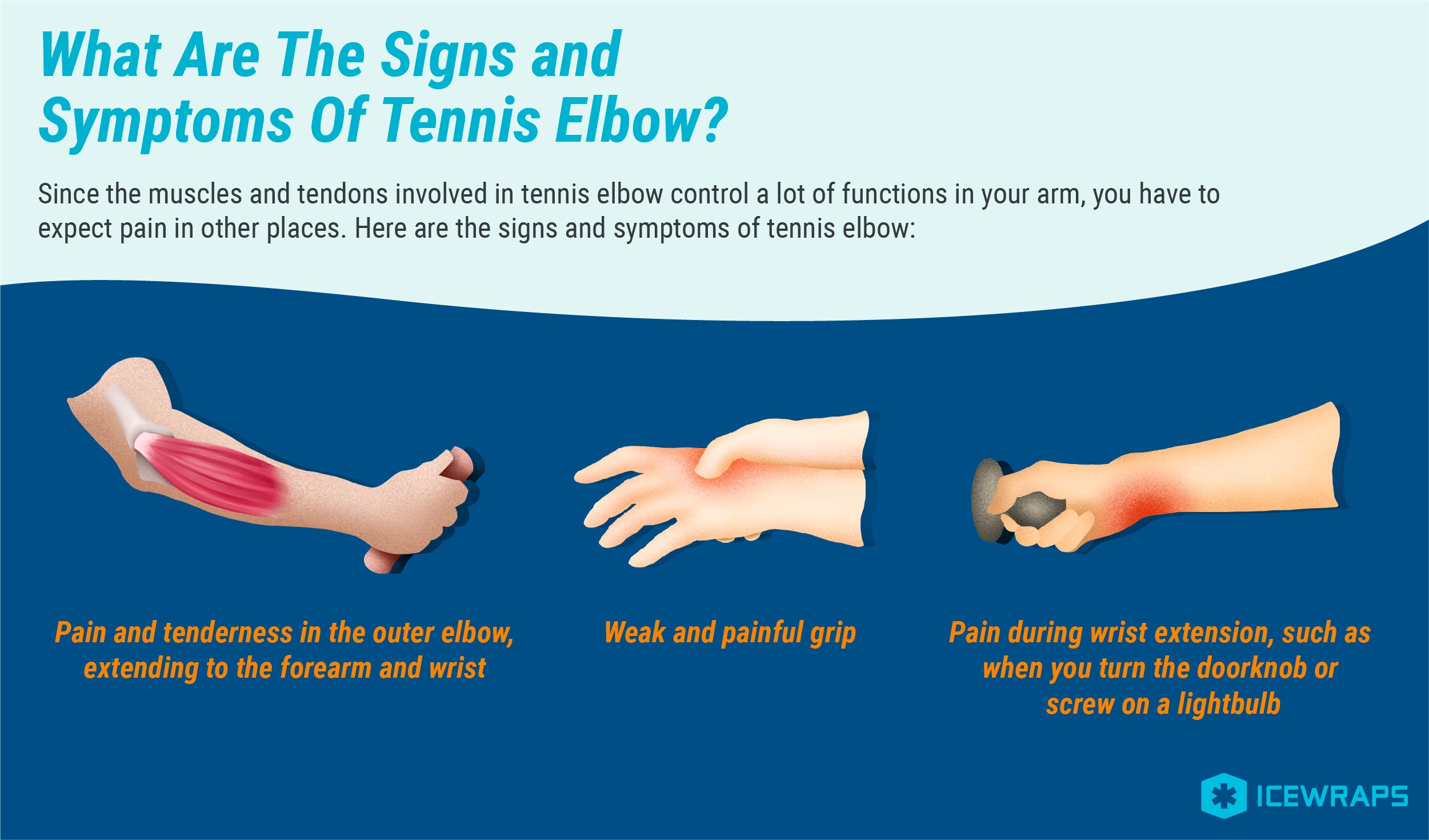Your Cart is Empty

Contents
Did you know that you can get tennis elbow even if you don't play tennis?
In fact, only 10% of people with tennis elbow are actually tennis players! The remaining 90% is made up of regular guys and gals who just happen to use their forearm muscles a lot.
That being said, tennis elbow can happen to anyone who overworks or overuses the extensor muscles of their forearm. Of course, your poor backhand game can also be a factor, but it's not the only culprit for the pain you're currently experiencing.
Here’s everything you need to know about tennis elbow. Read on to find out how this painful condition works and what you can do about it:
Tennis elbow or lateral epicondylitis is a pain condition that happens when you overwork and damage the muscles and tendons connecting your outer elbow to the rest of your forearm. This damage is often caused by activities that involve repetitive strain, like when you extend and flex your arm in racquet sports like tennis or squash. Other sports like baseball, gymnastics, weight-lifting and bowling can also cause the same condition, especially if you have poor form or technique.
Tennis elbow doesn’t occur to just tennis players or sportsmen, either. Carpenters, butchers, builders, and plumbers can also suffer from tennis elbow due to the nature of their jobs.
Aside from repetitive damage, trauma like a direct blow to the elbow or suddenly lifting a heavy object with no prior warm-up or exercise can also cause tennis elbow. Males aged 30-50 are especially at risk, too.

Since the muscles and tendons involved in tennis elbow control a lot of functions in your arm, you have to expect pain in other places. Here are the signs and symptoms of tennis elbow:
Painful as it is, tennis elbow is highly curable. As much as 80% to 90% of tennis elbow sufferers recover after a year of continuous treatment. The best part is that most of the treatment regimens are non-surgical and can be done from the comfort of home.
Here’s what you can do to treat tennis elbow:
Rest the area. Since the pain is caused by repetitive strain, adequate rest will allow your muscles and tendons to recover from the damage.
Over-the-counter pain medications like ibuprofen can also help ease the pain and lower inflammation.
Hot and Cold therapy. This is one of the most effective ways to treat and manage tennis elbow. Applying a cold pack right after you sustain the injury (within 24-48 hours is best) can help alleviate the pain and swelling.
If you've been suffering from tennis elbow for a while and have really stiff muscles, it would be best to use heat therapy to promote blood flow, help relax the muscles and facilitate healing.
 |
 |
|
ICEWRAPS 4X10 REUSABLE MULTIPURPOSE HOT/COLD GEL PACK, 2 PACK
|
ICEWRAPS SINGLE USE 4X7 INSTANT COLD PACKS, CASE OF 50
|
One great way to apply hot and cold therapy is to use a product like the ActiveWrap elbow wrap. It combines the effects of an elbow brace with hot and cold therapy by supporting and stabilizing the elbow joint while delivering hot/cold therapy for faster healing. This way, the packs stay securely in place and can target the affected areas better.
Exercise. Exercises help you recover faster and prevent tennis elbow altogether by strengthening the wrist and arm muscles. Here are some simple stretches and exercises that you can do at home:
Massage. This is a great way to loosen up those tight muscles and get the blood flowing to the area properly. Here’s how to self-massage to help alleviate tennis elbow pain:
Injections and Surgical Treatment. These procedures usually involve injecting painkillers like corticosteroids to the affected joint or delivering ultrasonic vibrations through needles to get rid of the damaged muscles. Other times, it involves an outpatient surgery and physical therapy after that. These procedures are often viewed as a last resort to treat tennis elbow.
Tennis elbow stems from the use and abuse of your extensor muscles. To prevent it, you have to make sure not to strain them too much for too long. Here are some best practices to prevent tennis elbow:
Take adequate rest periods between games, practice or work. Don’t overwork your muscles and tendons; give them a well-deserved break!
Practice good form when playing sports. Work on your technique so you don’t cause unnecessary strain on your muscles. For example, if you’re still working on your tennis game, it might be better to use a two-handed backhand stroke until you’re confident enough to use a one-handed stroke. This way, you prevent any muscle strain on your wrists and elbow. You also have to make sure that you’re using the right equipment and that they’re the right size, grip and fit to avoid further injury.
Employ proper body mechanics. Avoid flexing or extending your wrists or elbows beyond their natural range of motion. A nice example would be to get a comfy wrist rest or pad if you work in front of a computer all day. You can also practice your form and technique in sports so your elbows don't take the brunt of the force when you swing your arms.
Go gradually. Allow your body to ease into the action, especially if you're not used to it or haven't done it for a long time. Do proper warm-ups and stretching.
Exercise to strengthen your arm, wrist and even back muscles. Eat healthy food rich in protein to help repair worn out muscles while you’re at it!
Apply cold packs to sore muscles after a long day of practice or work. Just remember to keep them in place for no longer than 5-10 minutes to prevent skin and nerve damage.
At the end of the day, treating and preventing tennis elbow is all about taking good care of your body. Avoid muscle damage by knowing your limits and taking adequate rest. Strengthen your muscles, so they don't give out during activities and use a cold pack after a long day of grueling activity to keep inflammation at bay.
Have you experienced tennis elbow? What treatment regimen worked best for you? Let us know in the comments below!
Great advice and exercises I’ll definitely give them a go. Thank you
have tennis elbow real bad play tennis anmd work alsdo so a lot of wear and tear over the years .but thankyou for this its working allready thanks again
Comments will be approved before showing up.
Indika Samparh
July 07, 2021
Very valuable article.Thank you